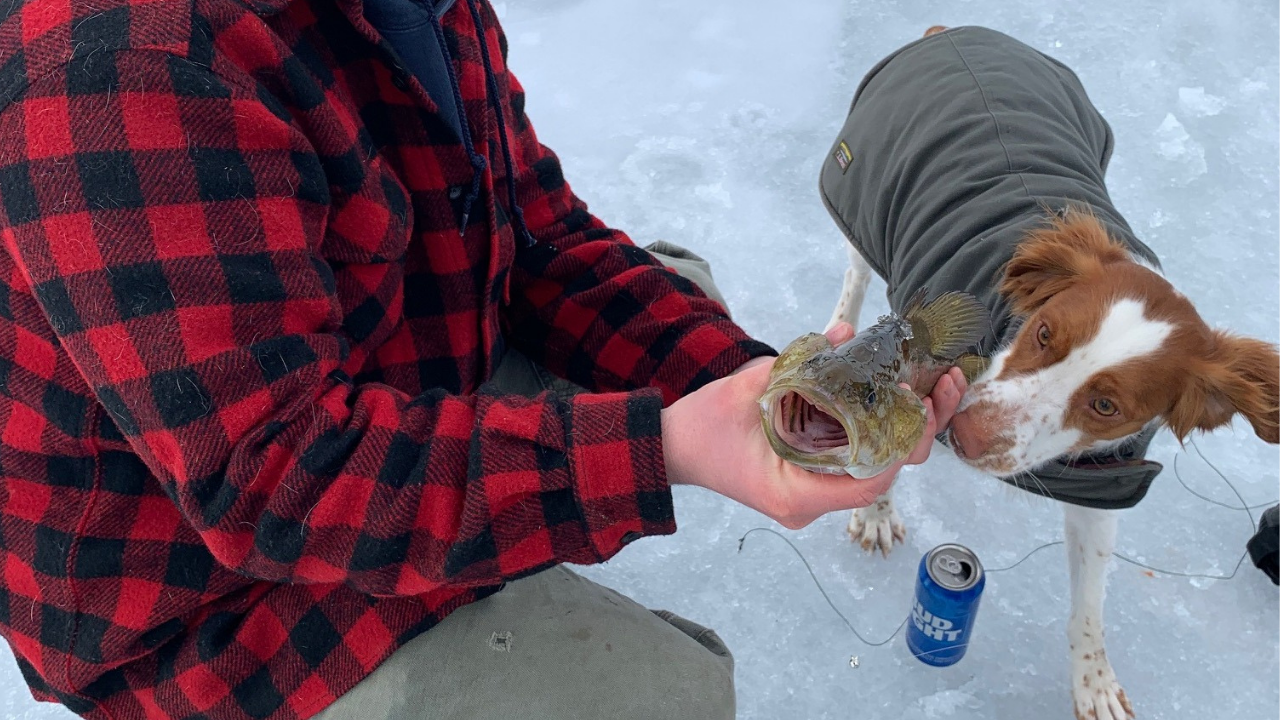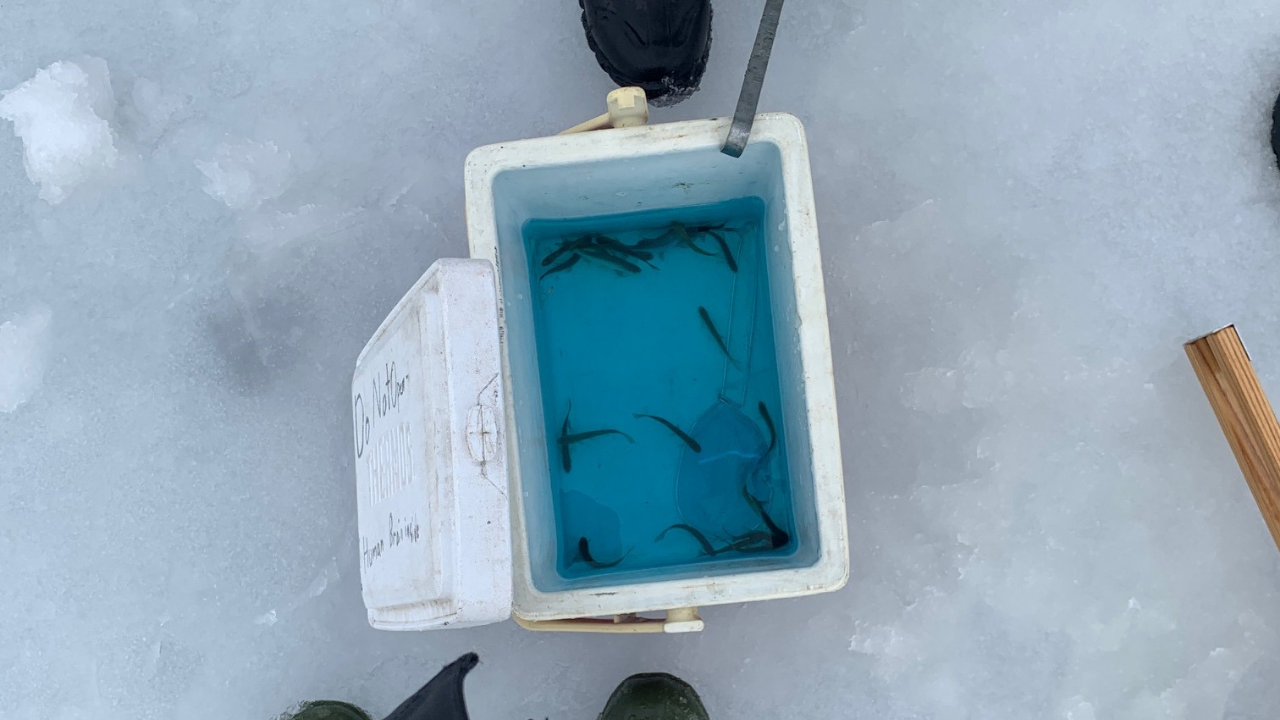Last Updated on February 20, 2022 by Jason Tome
In this post, you’ll learn how to ice fish step by step for beginners. This post will also cover ice fishing gear and ice fishing tips & tricks.
Ice fishing may seem complicated at first, however, with the right advice you can start having success right away. I give you all the information you need to have success from the start.
Let’s get started…
This post contains Amazon and other affiliate links, which means I’ll receive a commission if you purchase through my link, at no extra cost to you. Of course, you are not obligated to use my links, but it does help fund these posts in hopes of bringing more value to you!
Ice Fishing Gear For Beginners
You don’t need to spend a lot of money to have the best equipment when you’re first getting started ice fishing. That said, you will want to buy the essentials for safety and to have the most enjoyable time out on the ice.
Recommended Ice Fishing Gear
- Fishing License
- Proper Clothing
- Ice Auger
- Jigs For Ice Fishing
- Ice Fishing Traps (Tip-Ups)
- Protective Cases For Ice Fishing Traps
- Pack Basket For Traps
- Bait
- Bait Bucket and Net
- Ice Chisel
- Ice Scoop or Skimmer
- Depth Sounders
- Pliers
- Ice Safety Picks
- Shovel
- Jet Sled
- Creepers or Ice Cleats For Boots
- Chairs
- Split Shot Line Weights
Optional But Useful Ice Fishing Gear
- Thermos
- Wood Saw
- Stuff To Build A Fire
- Hand and Foot Warmers
- Listen to Music
- Propane
- Portable Grill
- Snowmobile
- Anything For Cooking and Eating
What Ponds and Lakes To Ice Fish On
To determine where would be a good spot to ice fish, I would suggest calling local fishing guides because they guide fishermen for a living and can point you to some great spots on nearby lakes and ponds.
Another excellent option is to call your state wildlife department. A regional fish biologist will be able to point you in the right direction. Make sure you tell the biologist what your goals are so they can fine-tune their recommendations to the experience you are looking to have.
For example, if you’re looking to catch a lot of fish you might want to fish warmwater species such as bass and perch because they often provide the fastest action. For beginners, this is usually the best choice.
Check The Ice Thickness
Make sure you check to see if the ice is safe before spending a lot of time on it. Because the ice can vary from spot to spot it is a good idea to chisel a few holes next to shore and keep doing so until you reach the spot you are going to fish at. You can learn everything you need to know about ice safety by visiting Maine’s IFW Ice Safety Tips.

Ice Fishing Methods – How To Ice Fish
There are two methods of catching fish when ice fishing. They are; ice fishing traps (AKA tip-ups) and/or by jigging.
Ice Fishing Traps (Also Known As Tip-Ups)
The best way to have success when ice fishing is to use Ice fishing traps. These traps have a spring-loaded flag that when a fish bites the flag springs into the air so you know there’s a fish on.
The benefit of ice fishing tip-up traps is that you bait them with live bait, which does all the work for you. You just have to wait for a flag to pop up into the air. For this reason, you are able to use many ice fishing traps at one time to maximize your chances of catching fish.
Ice Fishing Jigs
Ice fishing jigs can also be a successful way to catch fish but you can only operate one at a time. This is because it requires you to bob (jig) the pole up and down.
Jigging can be fun to do while you are waiting for your ice fishing traps to catch a fish. Also, you will increase your chances of catching a fish by having another pole in the water.
Where To Place Ice Fishing Traps
A great place to put traps is fairly close to shore, fish like the structure of the bottom so you likely don’t want to fish in very deep water, especially for warmwater fish.
You can also use structures that create funnels or pinch points, like points of land to place your traps. This will give your bait a high probability of being seen, and thus potentially get more bites.
Use An Ice Auger To Make Ice Fishing Holes
After you’ve chosen a spot you like it’s time to start augering holes for your ice fishing traps and jigs. You can do this by hand or with a powered auger. I recommend a power auger because it makes the process so much easier and takes much less time.
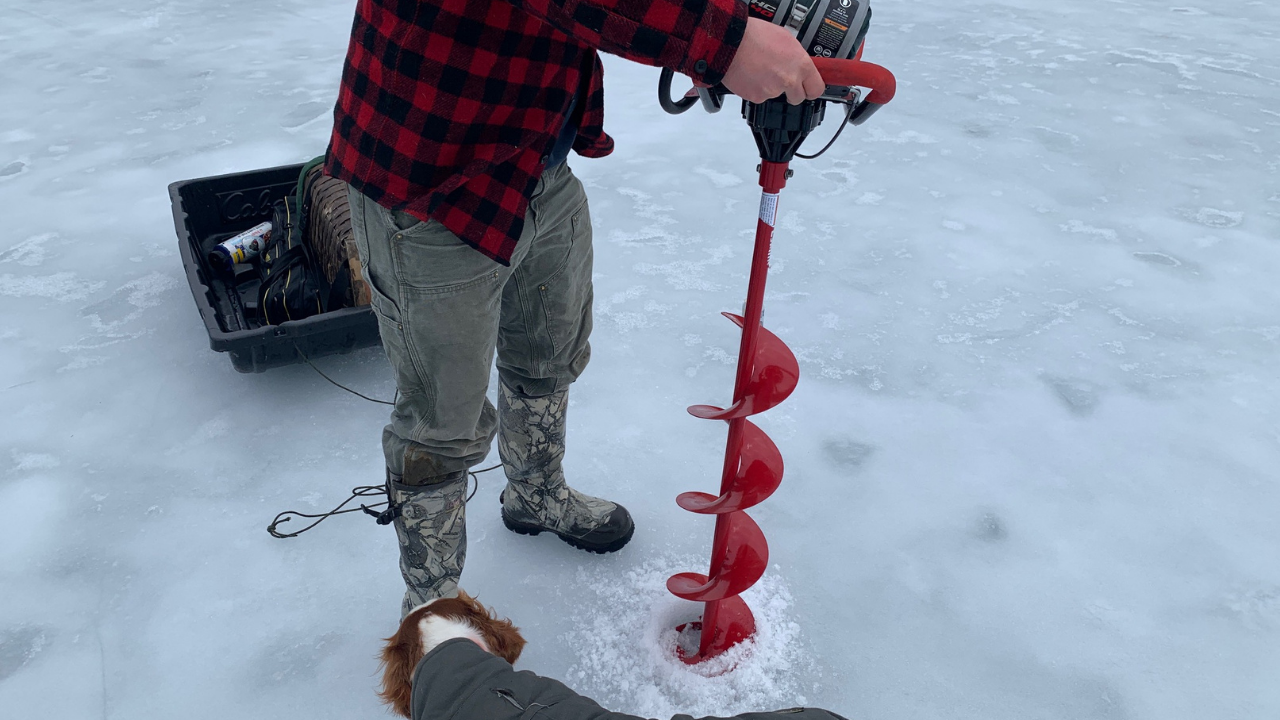
After you’ve augured your holes make sure to scoop out the fragments of ice that the auger created with an ice scoop or skimmer. This will make it easier to bait hooks, catch fish, and keep the holes from freezing back in as fast when it’s cold.
Check The Water Depth Using A Depth Sounder
After you’ve cleaned up the hole with the ice skimmer, you’re ready to check the water depth. You can use a depth sounder to check the depth.
Basically, all you do is put a weight on the end of your fishing like and lower it into the water until you feel slack. Once you feel slack, you’re on the bottom. Lift the sounder out of the water and look to see how much fishing line you used to hit bottom.
Checking the water depth is important because you’ll want to put some traps out just above the bottom because fish will often be found within the structure of the bottom. So, this is a good place to put your bait.
What Bait To Use Ice Fishing
Use Live Bait With Ice Fishing Traps
Live bait usually works best because it is the most realistic.
Common live bait includes:
- Smelts
- Chubs
- Shiners
- Earthworms
- Nightcrawlers
You’ll need to find a local bait shop and see what they have in stock.
You’ll want to buy plenty of bait for how long you’ll be fishing. You should also plan to have some extra bait for freshening old bait and for when you catch a fish that will usually kill your live bait.
How To Bait Ice Fishing Tip-Up Traps
To bait ice fishing traps with minnows, simply put the hook through their back, just under the spine. The minnows will be able to last like this for a long time.
Make sure to check your bait every hour to make sure they’re still lively. If the minnows aren’t looking lively, it is time to put a new minnow on to freshen things up.
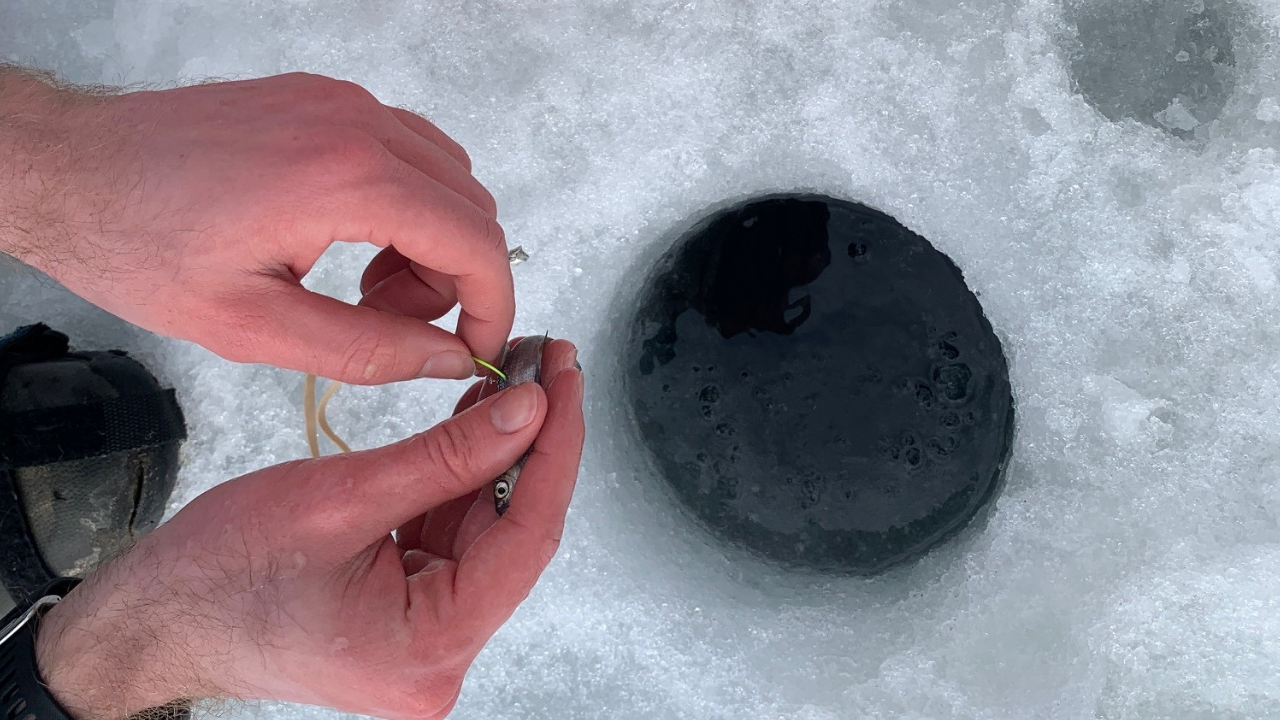
Best Ice Fishing Tip-Up Traps
If you’re planning to do a lot of ice fishing the more expensive ones are worth it because they don’t have as many hiccups. For example, cheaper traps tend to wear out faster, the trippers don’t stay in place as well, the trippers can also freeze up, and the reels might bend or fall off with use. The more expensive tip-ups tend to withstand more seasons offering a better value in the long run.
How Deep To Set Ice Fishing Traps
It’s a good idea to place traps in various depths to identify what depths are catching the most fish. Between 15-35 ft are good depths to start with. Then either place the bait just under the ice (a few feet down) or put bait just off the bottom for best results. Then you can readjust your traps throughout the day to mimic the traps that are getting the most bites.
How To Set Ice Fishing Traps
Once you bait your ice fishing traps and put the bait down to your desired depth, the next step is to set the trap. Setting an ice fishing trap is much easier than it might first appear. That said, there are different types of tip-up traps so I can’t tell you exactly how to set your model, but I can tell you the basics.
Basically, you need to bend the flexible flag down and lock it into place. There will be a trigger mechanism on the reel so that when a fish bites and starts taking out the line, the trigger mechanism will set off the flag.
What To Do While You Wait For Fish To Bite
If fish aren’t biting often, ice fishing can get boring, especially for beginners. Luckily, there are many things you can do while you wait. For example, you could get a fire started and cook food, play football, ice skate, frisbee…etc.
What To Do When A Trap Flag Is Sprung
Run! When a fish bites and the flag is set off you want to get to the trap as soon as possible so you can set the hook. The sooner you can do this the better because it gives the fish less chance to get away.
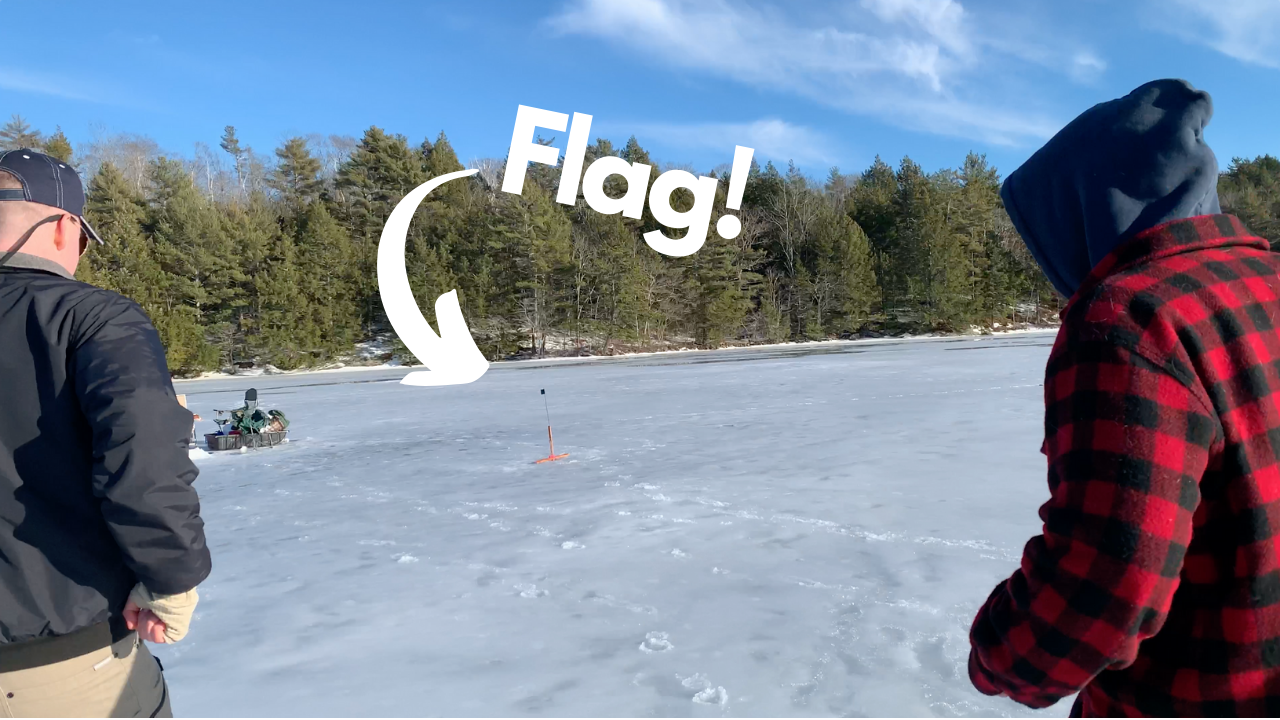
How To Set The Hook When Ice Fishing
When a fish bites live bait, they are often don’t realize it has a hook. For this reason, they’re often not stripping the line out. In this case, you need to take in the slack until you feel tension on the line. Once you feel tension, you give the line a quick pull to set the hook.
If the line is being stripped out then you can just start pulling the line or give it a light tug because the hook will set itself due to the force generated from the motion of the fish.
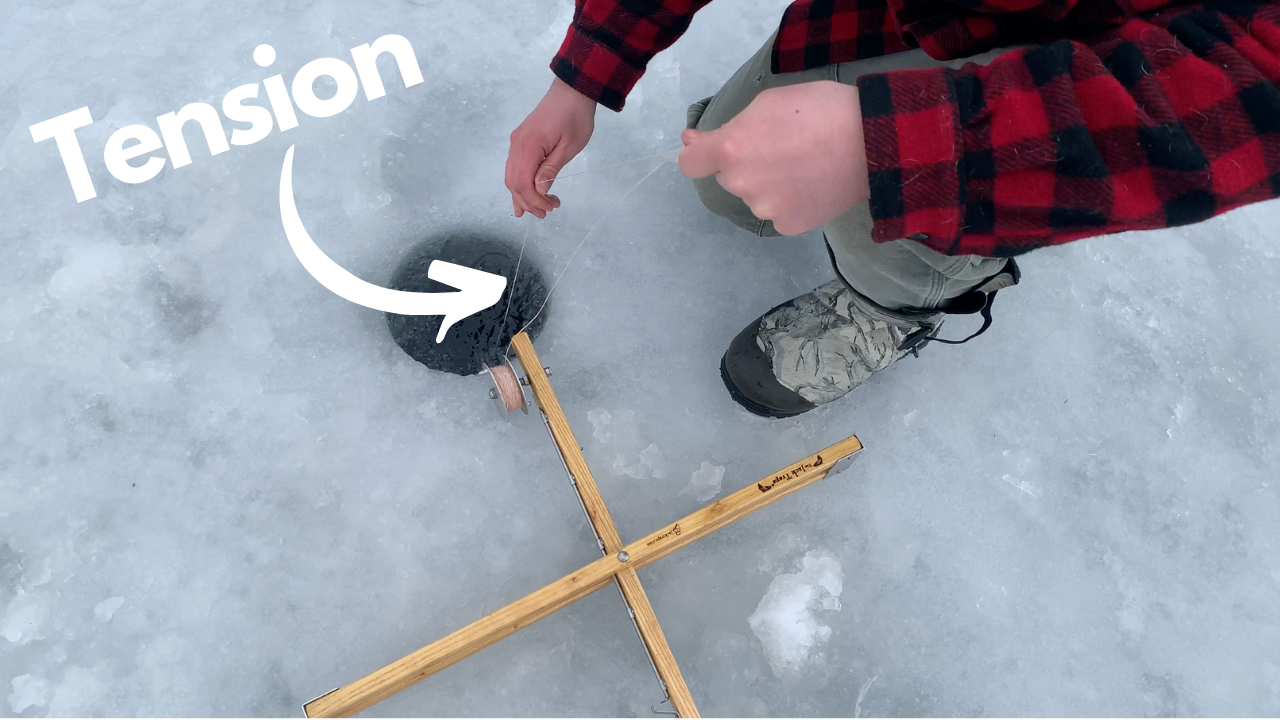
How To Land A Fish When Ice Fishing
Once you have the fish hooked, you use your hands to take up the line. So, you’re battling the fish with your hands. If the fish wants to run with the line let it take some line. Otherwise, it might break the line. That said, keep a little tension on the line with your fingers to make it harder for the fish to strip line, this will tire the fish out faster.
Once the fish is not stripping the line out as aggressively you can start winding in the line again by hand. Keep repeating this process until you get the fish to the hole.
Once the fish is at the hole don’t be afraid to use your hand to aid in pulling the fish up and out of the hole. It’s a good idea to use your hand because if you don’t have a good hook set this is when the hook might get pulled out of the mouth of the fish due to all of the fish’s weight will be out of the water. Thus, this can be a time when you can lose the fish.
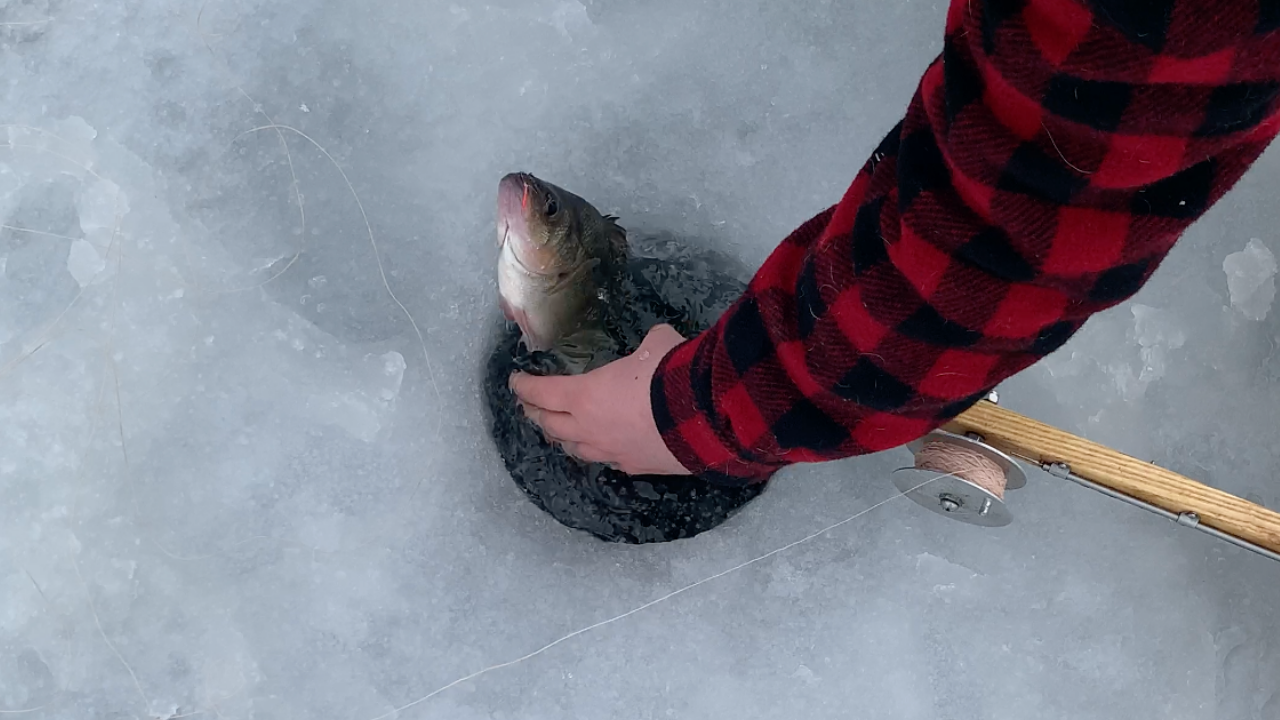
Ice Fishing Jigs
Jigging for fish is another method that can be used to catch fish when ice fishing. With a jig, you use an artificial lure and bob it up and down. A jig called the Swedish Pimple is a favorite among ice fishermen. You can even add pieces of meat to the hook of the jig to further entice fish to bite.
The mechanics of jigging involve keeping the lure close to the bottom and lightly bouncing the rod tip up and down in fairly slow even intervals.

Conclusion
Hopefully, this post helped speed up your learning curve on how to ice fish. If you have any further questions on how to ice fish you can message me on social media or leave a comment below.

